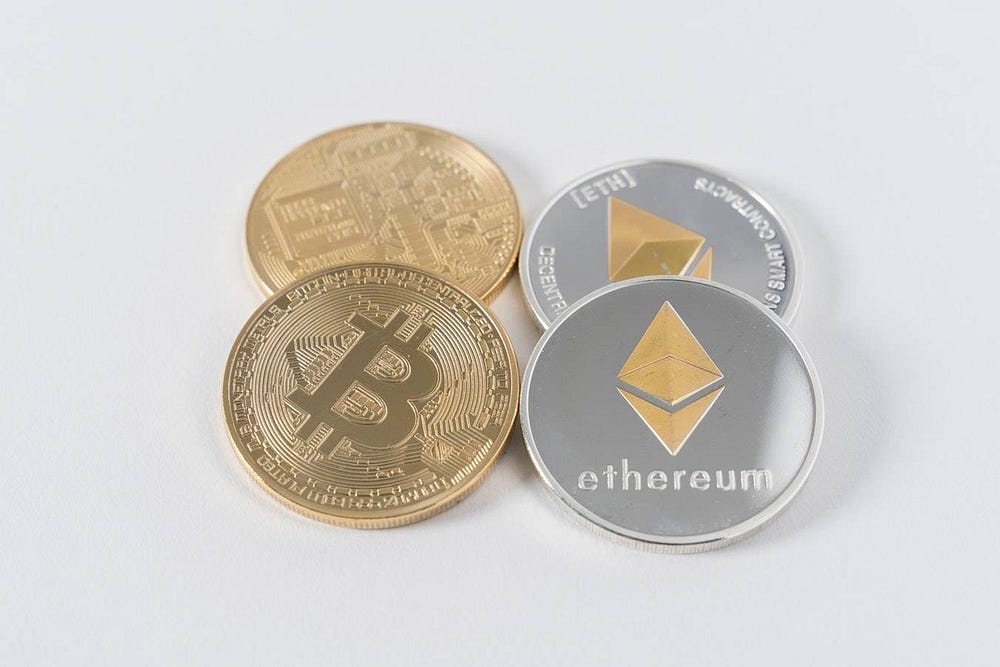ART TRANSACTIONS WITH CRYPTOCURRENCIES
Cryptocurrencies and blockchain technology are slowly infiltrating every part of our lives. And art gallery business is not an exception. Recently, we talked about how blockchain can be used to authenticate art. Today we’ll talk about how the new technology is impacting art galleries.
The invention of the blockchain has led to the creation of various cryptocurrencies, digital currencies that are stored and distributed via the blockchain. The most valuable cryptocurrencies Bitcoin and Ethereum, are widely used on the internet to make payments and purchases.
Yet many art businesses are still skeptical about using cryptocurrencies in their everyday work and rely on more traditional ways to make a sale. Others, however, have found a way to adapt and profit from the new technology.

// Accepting Cryptocurrency for Payments
Though cryptocurrencies seem like an abstract term to many, they are very much actual currencies that can be used on the market, just like dollars and pounds. Nowadays, there is an increasing number of galleries that accept Bitcoin, Ethereum and other types of cryptocurrencies for purchases.
Earlier this year, Dadiani Fine Art gallery in the UK organized a first “cryptocurrency” art sale that accepted only Bitcoin, Ethereum and Bitcoin Cash for payments. Art Stage Singapore also seems to be on the trend, since this year four paintings were bought with cryptocurrencies at the fair.
// Cryptocurrencies Facilitate Payments
There is a reason why cryptocurrencies are gaining on popularity in the art world. Transactions are made from one wallet account to another without involving a middleman (e.g the bank) and with much lower fees. When a gallery and a buyer agree on the sale, all a gallery has to do is to give a buyer its public key (a string of words and numbers).
The buyer then uses the key to transfer the money to the gallery’s wallet. From there, the gallery can use it for future payments or turn it into another currency.
Cryptocurrencies can be transferred to dollars, pounds or any other currency by linking the wallet to the gallery’s bank account. The technology is perfectly safe since every transaction has to be verified by thousands of computers in the blockchain, which makes these types of transactions almost impossible to manipulate.
// Selling Shares in an Artwork
In a move that revolutionized the art market, Eleesa Dadiani from Dadiani Fine Art sold 49% of Andy Warhol’s artwork 14 Small Electric Chair to various buyers. This is the first time somebody sold shares (also called economic interests) in an artwork rather than an entire artwork.
In an auction conducted on the Maecenas platform (specialized for fractional ownership of art) buyers were able to use Bitcoin to bid for a share in the Warhol’s art piece. Once the purchase was complete, change in the fraction of the ownership was immediately recorded on the blockchain.
Though the actual artwork still remains in the hands of the original owner (who still owns 51% of the piece) buyers of a share get a digital certificate that proves their partial ownership, that they can then resell on the secondary market, or use as collateral for a loan.
Every time an artwork manages to earn some money, let’s say through a loan to a museum or a gallery, owners of the economic interests will get a share of the profit through dividends that will be transferred to their account.
This type of arrangement can make a world of difference for the galleries. Galleries can use the money to finance new exhibitions and keep afloat by selling only 20% of their valuable works.
For example, if a gallery needs money to fund for the next installment or expand its collection of works, it no longer has to sell any of its existing work. Auctioning a fraction of an artwork will enable the galleries to gather needed funds while keeping the artwork at their premises. It’s like having your cake and eating it too.

// Using Cryptocurrency to Raise Capital
However, selling economic interests in an artwork is not the only way to keep your gallery afloat. Cryptocurrencies can be used to gather money for investments or expansion of your venue.
Whitestone gallery in Hong Kong recently invited the public to invest in the expansion of its gallery trough blockchain. The gallery has set up an initial coin offering of its very own cryptocurrency called WHS. By buying the currency, buyers invest money in the gallery, and in return, they’ll get a discount on gallery works, small presents, and early investors have been promised a dividend.
At this time cryptocurrency is a new technology, just like credit cards and e-banking were before, with many people questioning their reliability and safety. And just like credit cards before, using cryptocurrencies in our daily lives can be just as normal as, let’s say paying for groceries with your VISA.
Though the art world is catching up on the new technology, there is still a long way to go. Many art world institutions are still unwilling to use crypto as a currency at any form, including big auction houses like Sotheby’s and Christie’s. However, as cryptocurrencies begin to infiltrate our lives more and more, it’s expected that galleries will embrace them and find different ways to use them to their benefit.
Image by Allan Stewart









